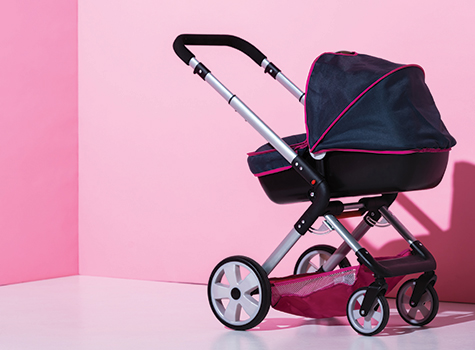By Rupa Pereira

If I were to ask you – what’s the hardest job in America and if you would sign up for free, what would be your response? No-brainer, right?
Well, if you’re a parent – you just have.
Yes, you may have had to forsake gainful income to actively invest in your children’s future or you’ve engaged a team to help you with active management while you stay involved more as a passive investor. Either way, parenting feels like a thankless, endless, endurance-building job, but with some meaningful returns over a long-term horizon.
What’s involved in active parenting and why would it generate better returns? Has parenting evolved since the time we were kiddos? Absolutely, 100%!
Back in the 70s and 80s, I was raised in a household in India with traditional roles – Dad worked out of the home and was Chief Executive and Chief Financial Officer, while Mom was Chief Operating Officer and head of Human Resources. At the time, this was a typical model and children benefited from a functioning family unit backed up with extended family support.
Today is a different story. In an age marked by rapid digitization, globalization, social media barrage and career pursuits – nuclear families are under pressure to keep up with the Joneses and continually shift their goalposts. All that is good, except that two income household scenarios have spurred the family to outsource roles that previously were managed in-house, caregiving being one of them.
Count me among the delegators – post MBA, after the birth of my 2nd daughter, I decided that it’s important to pursue my career ambitions while my husband pursues his. What made it justifiable was my girls thrived in daycare and preschool, so it seemed. The cracks, however, started to show. CFO, COO and HR duties began to slip since both parents were busy being CEOs.
Families are vulnerable to a variety of challenges, including financial stress, health issues, and interpersonal conflicts. In addition, modernity is a mixed blessing – we’re inundated with comforts and conveniences and quick fixes of what society can offer but is there a hidden cost – and it cuts right to the heart and soul of the family. If these vital organs are not nourished regularly, the investments (i.e., children and family relationships) may underperform in the long run even while generating some quick gains.
When our family was confronted with this realization, my husband took time off for a year to be a SAHD so I could focus on my corporate career. When he was ready to head back to work, I chose to put family ahead of my career pursuits. Stepping down from the career ladder and switching to a 1-income household meant making lifestyle adjustments, but I had my eyes on the long-term investment of assets. Assets that masquerade as bundles of joy, stress, happiness, and exhaustion – ones that would need nurturing, guidance, parental oversight so that in adulthood they can springboard into well-rounded individuals.
What’s the dividend?
Being a stay-at-home parent can provide benefits such as being able to spend more time with children, having greater control over the children’s upbringing, and being able to manage the household and daily routine more effectively. Additionally, stay-at-home parents can save on childcare expenses and have more flexibility to attend to their children’s needs.
What are the investment fees?
It is important to note that being a stay-at-home parent can also have drawbacks such as financial strain and potentially feeling isolated from the outside world.
Investing in your family as a SAHM or SAHD can involve a variety of actions:
• Create a daily routine: Develop a daily routine that works for you and your family. This may involve setting regular mealtimes, nap times, and bedtimes. Having a consistent routine can help your family members feel more secure and can make it easier to manage household tasks.
• Spend quality time with your children: As a SAHM or SAHD, you can spend more time with your children. Make the most of this time by engaging in activities that your children enjoy. Spending quality time with your children can help strengthen your bond and create lasting memories.
• Prioritize self-care: It’s important to take care of yourself so that you can be at your best for your family. This may involve taking time for exercise, hobbies, or relaxation. It’s also important to prioritize your mental health by seeking support when needed.
• Foster open communication: Communication is key in any family. As a SAHM or SAHD, you have the opportunity to create an environment of open and honest communication.
• Find ways to stay connected: Being a SAHM or SAHD can be isolating at times. It’s important to find ways to stay connected with the outside world. This may involve attending social events, joining a parenting group, or volunteering in your community.
Lastly, should the SAH parent opt to ramp back into the workforce, there’s good news! LinkedIn now supports “Stay at home parent” as a job title – to explain the break in work experience. Think of all your transferable skills – organization skills, time management, conflict resolution and patience!
It does take a village… however, in its absence, the onus is on parents to equally shoulder the financial and household responsibility. After all, raising a family is a serious commitment eventually bearing fruits of a strong foundation, healthy relationships, emotional wellbeing, and well-rounded young adults. Well-balanced kids are more likely to foster healthy habits helping them navigate school, college and life in general.
The return on this investment is priceless. After all, isn’t that what we as parents strive for and willingly take on the hardest unpaid job in America?
Rupa Pereira is the owner and lead financial advisor at FWJ Planning, an investment advisory and planning firm registered in NC. As an enrolled agent, she’s also authorized by IRS to represent her clients on tax-matters. Contact: [email protected].



